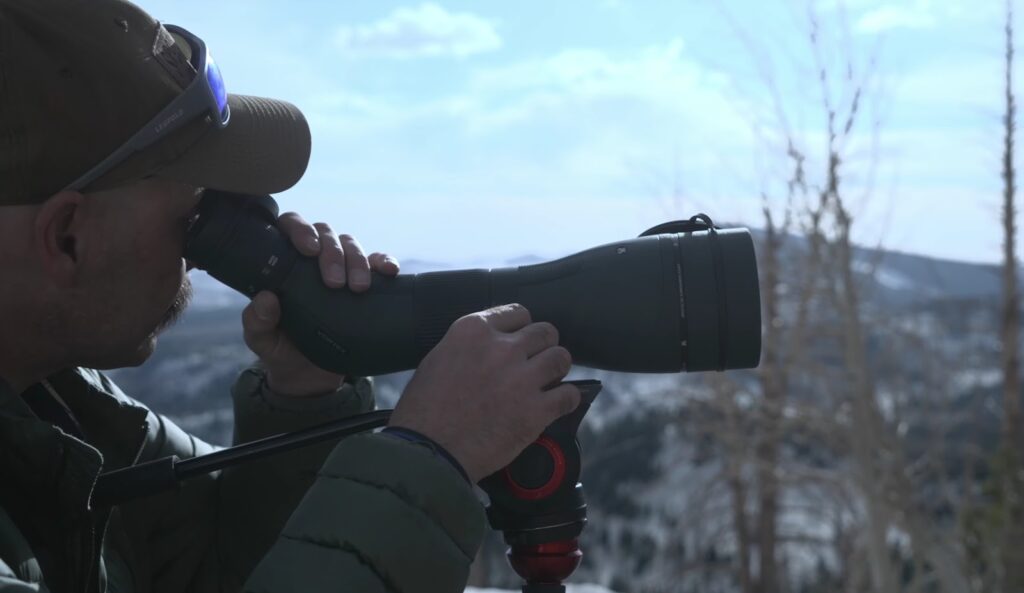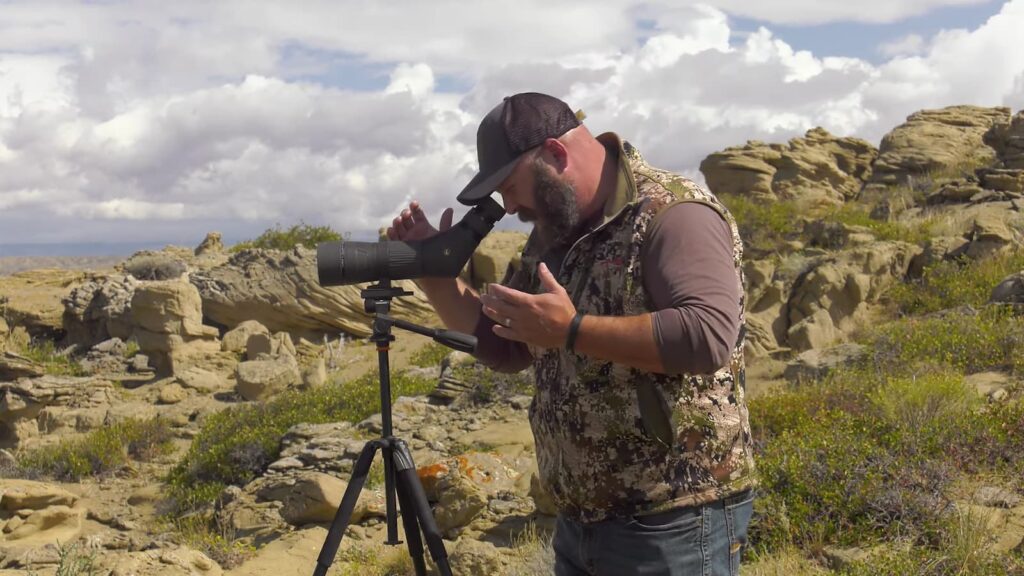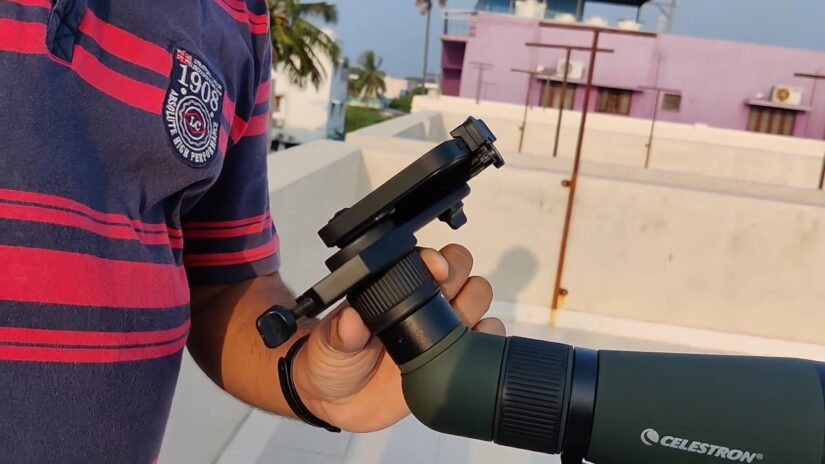How to Choose the Best Budget Spotting Scope for a Balloon Trip?
Balloon trips present a unique opportunity to witness breathtaking landscapes from a high perspective. Selecting the right spotting scope can significantly improve this experience, allowing for detailed views of distant terrains and landmarks. This guide aims to assist in choosing an affordable yet effective spotting scope that promises clear visuals without straining the budget.
Exploring Spotting Scope Features for Balloon Trips
When preparing for balloon trips, the choice of spotting scope can greatly improve the viewing experience. A spotting scope should be chosen based on several key features that influence performance and usability:
- Magnification: An ideal range for magnification in spotting scopes is typically between 20x and 60x. This range allows for detailed views of distant landscapes and objects without excessive shaking, which can be an issue at higher magnifications;
- Objective Lens Diameter: The diameter of the objective lens is a critical factor in image quality. A lens size of at least 60mm is recommended as it gathers more light, providing a brighter and clearer image. Larger lenses can offer even more clarity but may increase the scope’s weight;
- Field of View: A broader field of view is advantageous for balloon trips. It facilitates easier tracking of moving objects across expansive landscapes. A wider field of view means less need for frequent adjustments and a more enjoyable viewing experience.
Additional features to consider include the optical quality, such as the type of glass and coatings used, which can upgrade image clarity and color fidelity. Weatherproofing features like waterproof and fog-proof capabilities ensure the scope performs well in various atmospheric conditions. As you consider your options, here are some budget spotting scopes list that are well-suited for balloon trips. These models provide a good starting point without overwhelming you with high costs.
Selecting the Right Weight and Size
Choosing a spotting scope for use in a balloon requires careful consideration of its weight and size. Due to the confined space and the need to minimize load:
- Compact Design: A compact spotting scope is preferable. Smaller scopes are easier to handle and take up less space, which is a significant advantage in the tight quarters of a balloon basket;
- Lightweight Materials: Opt for scopes made from lightweight materials such as carbon fiber or composite plastics. These materials reduce the overall weight without compromising durability;
- Angled Body: Spotting scopes with angled bodies are recommended for balloon trips. They tend to be more comfortable to use in situations where positioning flexibility is limited. The angled design allows for easier viewing without the need to continually reposition the scope or oneself.
To further improve the usability of spotting scopes in balloons, consider accessories such as a stable yet lightweight tripod that can fit within the basket. A remote control for focus and zoom can also be very handy, minimizing the need for manual adjustments that can disrupt the viewing experience.
Prioritizing Durability in Spotting Scopes
When selecting a spotting scope for outdoor activities, especially in diverse environments like Hawaii’s coastal areas, it’s essential to focus on durability. A strong construction guarantees that the scope can withstand harsh conditions, whether it’s the salt spray of the ocean or the humidity of tropical climates. It’s advisable to choose a model that features both waterproof and fog-proof capabilities. These characteristics are critical as they safeguard the scope’s internal mechanisms against moisture and sudden temperature changes that can occur at varying altitudes and weather conditions. Here are some considerations:

- Material Quality: Look for scopes made from reinforced polymers or metal alloys, as they offer better protection and longevity;
- Sealing and Coating: Ensure the scope is O-ring sealed and nitrogen or argon purged. This prevents internal fogging and water entry, which could damage the optical elements;
- Protective Features: Additional features like rubber armoring can provide shock resistance, reducing the risk of damage from accidental drops or bumps.
Optical Quality in Spotting Scopes
To guarantee a remarkable balloon experience, the quality of the optics in your spotting scope is essential. High-quality optics are characterized by their ability to deliver clear, bright, and vibrant images, which are particularly important during the low-light conditions of dawn and dusk. Here’s how to assess the optical quality:
- Lens Coating: Opt for scopes with fully multi-coated lenses. These coatings significantly enhance light transmission, improving both contrast and brightness of the image;
- Glass Quality: High-density (HD) or extra-low dispersion (ED) glass provides superior color fidelity and resolution, reducing chromatic aberration and ensuring sharper images;
- Objective Lens Size: A larger objective lens can gather more light, which is beneficial for viewing in dim conditions. However, larger lenses can make the scope bulkier, so balance the lens size with the scope’s overall weight and portability;
- Recommendations for Budget-Conscious Buyers: Although premium optics come at a higher price, numerous budget-friendly scopes offer commendable optical performance. Brands like Celestron and Vortex offer models that strike a balance between cost and quality, making them ideal for enthusiasts who do not want to compromise on clarity but are mindful of their budget..
Emphasizing Simplicity in Operation
When going on balloon trips, the simplicity of setting up and adjusting your spotting scope becomes crucial due to the limited space and stability. It’s advisable to opt for scopes designed with user-friendly features. Look for models equipped with smooth focusing mechanisms that allow for quick adjustments. Additionally, the stability of the scope is essential, so consider scopes that come with strong tripod mounts. While some scopes may include tripods, they often do not meet the required standards for challenging environments. Investing in a separate, high-quality tripod can significantly improve your viewing experience. Here are a few pointers to consider:
- Focusing Mechanism: Select a scope with a fluid and easy-to-adjust focus to avoid fumbling during critical sighting moments;
- Tripod Compatibility: Ensure the tripod mount on the scope is universally compatible with various tripod brands;
- Included Accessories: Evaluate whether the included tripod is adequate or if a more durable and stable one is needed.
Read User Feedback
Prior to finalizing any purchase, it’s vital to gather insights from those who have already used the product. Reading through user reviews and checking ratings can shed light on the spotting scope’s performance and resilience in real-world scenarios, particularly in conditions similar to your intended use. Feedback can highlight potential issues with clarity, durability, or usability that may not be apparent during a cursory examination. Here’s how to make the most of reviews:
- Diverse Sources: Check reviews from multiple sources to get a balanced view;
- Recent Reviews: Focus on recent feedback to get information on the latest model’s performance;
- Detailed Reviews: Look for reviews that detail specific situations similar to your intended use.
The Importance of Hands-On Testing
Where feasible, physically testing various spotting scope models can be incredibly beneficial. This hands-on approach is possible at sporting goods stores or through rental options and is especially useful for comparing different models side by side. Testing the scopes personally allows you to assess aspects like the clarity of the image, the effectiveness of the zoom function, and the overall ease of use, ensuring the model chosen aligns with your expectations and needs. Consider these tips when testing:
- Compare Models: Try different scopes under similar conditions to compare performance;
- Practical Testing: Check how easy it is to adjust the scope while wearing gloves or in dim lighting;
- Rental Trial: If purchasing is not an immediate option, consider renting a scope for a few days to test it in a variety of settings and weather conditions.
Choosing Between Straight and Angled Spotting Scopes
When selecting a spotting scope, one of the initial decisions to make is whether to opt for a straight or angled design. Both types offer distinct advantages depending on the user’s needs and viewing conditions.

Straight Spotting Scopes:
- Ease of Use: Straight scopes are particularly user-friendly when observing from a seated position or from a vehicle, as they allow for direct line-of-sight viewing;
- Portability: These scopes tend to be more compact, making them easier to pack and transport during hiking or traveling;
- Target Acquisition: The straight-through viewing configuration facilitates quicker location and tracking of moving targets, ideal for wildlife observation and sporting events.
Angled Spotting Scopes:
- Comfort: Angled scopes feature a rotatable eyepiece, which can be adjusted for comfortable viewing over extended periods. This makes them ideal for lengthy nature observations;
- Versatility: The adjustable eyepiece height is a boon for groups with varying viewer heights, ensuring everyone can have a clear view without needing to adjust the tripod extensively;
- Tripod Compatibility: Angled scopes are typically better suited for use with shorter tripods, which are inherently more stable. This stability is crucial for high-magnification viewing, helping to reduce shake and enhance image clarity.
Eyepiece Options: Fixed vs. Zoom
Choosing the right eyepiece is critical for maximizing the functionality of your spotting scope, with options generally falling into two categories: fixed or zoom lenses.
Fixed Eyepieces:
- Clarity: Fixed eyepieces often provide superior optical clarity and brightness, making them ideal for activities like stargazing where fine detail and contrast are necessary;
- Simplicity: These eyepieces require less adjustment, offering a consistent viewing magnification that is reliable and straightforward to use.
Zoom Eyepieces:
- Flexibility: Zoom eyepieces allow users to vary magnification, adapting quickly to different situations, whether tracking a bird in flight or scanning a panoramic landscape;
- Range: Typically, a 20-60x magnification range suffices for most outdoor activities, including bird watching and hunting, providing both wide views and the ability to zoom in for detailed observation.
Tripod Essentials for Spotting Scopes
A strong tripod is an indispensable accessory for any spotting scope user, providing the stability needed to achieve clear, detailed images.
- Durability: Select a tripod that promises durability and the ability to withstand outdoor conditions. Metal tripods, though heavier, often offer the best stability;
- Adjustability: Tripods with adjustable legs are crucial for use in varied terrains, allowing the user to maintain a level scope on uneven surfaces;
- Height and Weight: Consider the height range and weight of the tripod. A model that is too light may be prone to tipping, while one that is too bulky may be challenging to carry during extensive treks.
Conclusion
Choosing the ideal spotting scope for your balloon trip doesn’t have to be a hard task. By focusing on key features such as magnification, lens quality, and durability, while also considering budget constraints, you can find a scope that improves your viewing experience without breaking the bank. Armed with the right equipment, you are set to enjoy spectacular aerial views and make unforgettable memories. This guide provides a solid starting point for selecting a spotting scope that meets both your needs and your budget, guaranteeing every moment in the skies is as vivid and detailed as possible.
